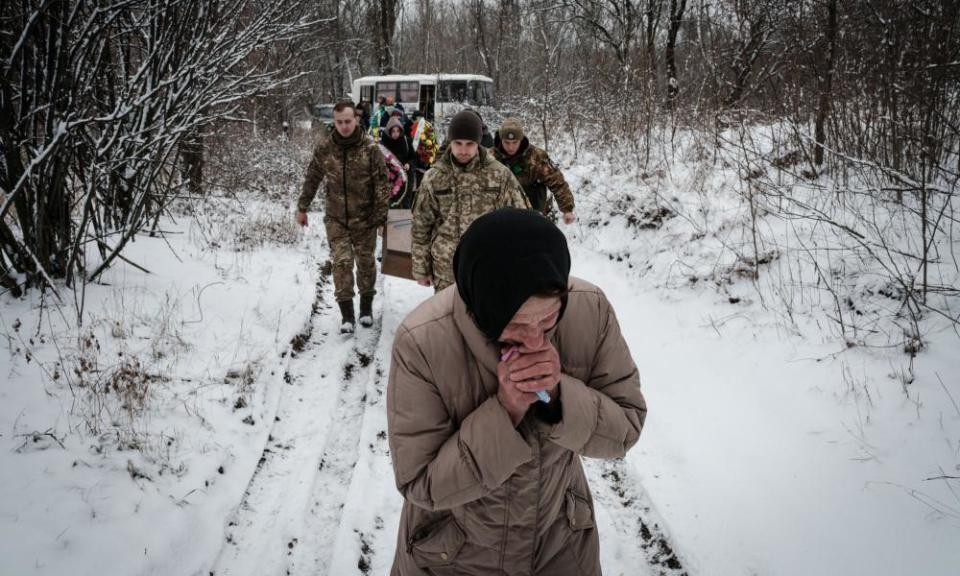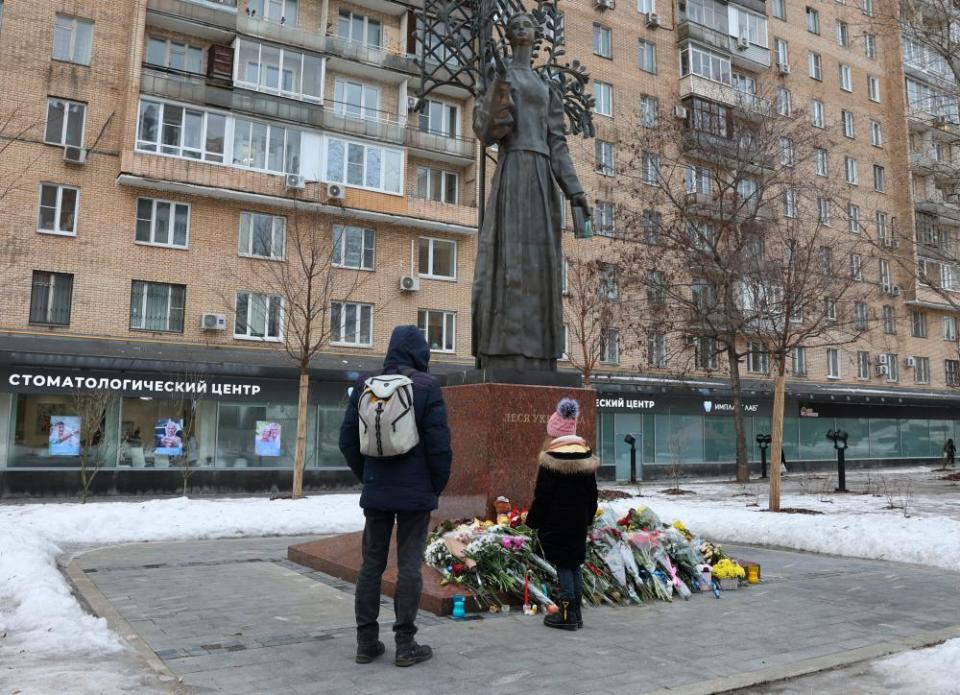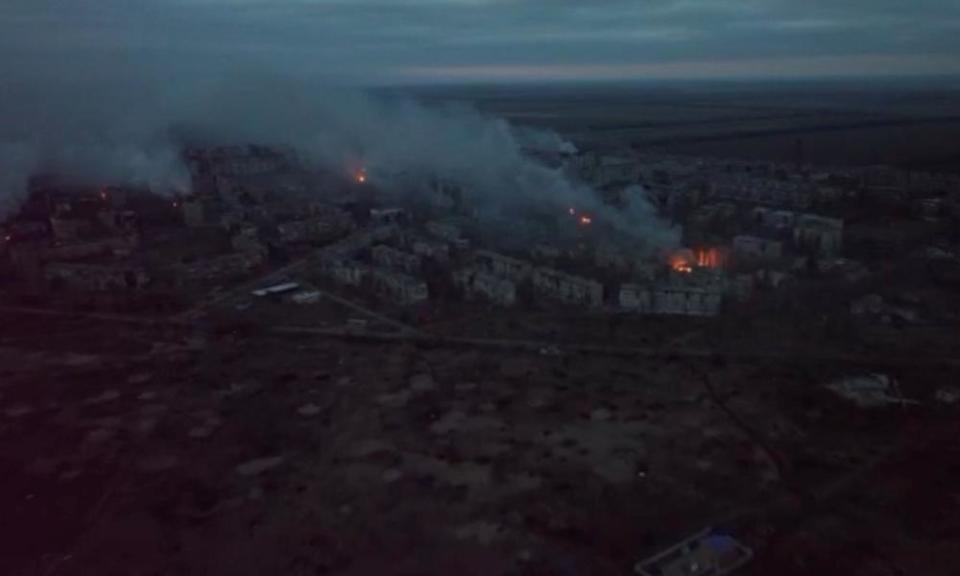What happened in the Russia-Ukraine war this week? Catch up with the must-read news and analysis

Every week we wrap up the must-reads from our coverage of the Ukraine war, from news and features to analysis, visual guides and opinion.
‘The big battle is coming’
Kyiv’s forces are preparing for the war’s most intense phase, world affairs editor Julian Borger reported from the Ukrainian town of Huliaipole 60 miles (100km) east of Zaporizhzhia city.
Russia is relentlessly building up its forces while Vladimir Putin is moving the economy towards a war footing to churn out new tanks and missiles. The chief of the Russian general staff, Valery Gerasimov, has been put in direct charge of Ukrainian operations, a move seen by many analysts as presaging a major offensive.
“The big battle is coming this spring, or even before,” says Vitaly, a senior sergeant in the 56th Mariupol motorised infantry brigade, which is holding the line around Huliaipole.
According to Ukraine’s defence minister, Oleksii Reznikov, Moscow is planning a major offensive to coincide with the one-year anniversary of its invasion, on 24 February.
Speaking to French media, Reznikov warned that Russia would call on a large contingent of mobilised troops. Referring to Russia’s general mobilisation of 300,000 conscripted soldiers in September last year, he claimed that numbers at the border suggest the true size could be closer to 500,000.
Why Ukraine wants F-16 fighter jets
As western allies refused Ukraine’s requests for F-16 fighter jets, Dan Sabbagh looked at what F-16s are and why Ukraine is asking for them. The F-16 Fighting Falcon is a lightweight fighter aircraft that was initially designed as long ago as the 1970s. It first went into service in 1979, and was used heavily by the US airforce in both Iraq wars and in Afghanistan.
Originally built by the US in a consortium with Belgium, Denmark, the Netherlands and Norway, the jet, which can travel twice the speed of sound, became one of the most popular military aircraft of all time and remains widely in use. Lockheed Martin, the US manufacturer, says there are more than 3,000 F-16s in service in 25 countries.
Today, it has been superseded by the F-35, but is it still being manufactured for sale by Lockheed in South Carolina. That’s because it is cheaper – costing in the tens of millions – and because the US does not always give export permission for the more modern jet.
Ukraine had a small air force of Soviet-standard jets at the start of the war, amounting around 120 combat capable aircraft, according to the IISS thinktank. That number has dwindled as the war has gone on, although, remarkably, given the numbers of Russian aircraft and air defences, experts say Ukraine retains a limited air capability. But as time goes on, its air force will need to be replenished.
‘Ukraine is not our enemy’

The Kremlin has stamped out public dissent but many Russians continue to risk arrest by honouring Ukrainian victims of war with makeshift memorials, wrote Andrew Roth.
One such person, Natalia Samsonova, says she imagines the muffled screams of those trapped under the rubble, the fire and smell of smoke, the grief of the mother who lost her husband and infant child beneath the ruins of the building in Dnipro bombed by Russia. She imagines being unable to breathe.
That is why she visited a statue to the Ukrainian poet Lesya Ukrainka, a largely unknown monument tucked away among Moscow’s brutalist apartment blocks that has hosted a furtive anti-war memorial at a time when few in Russia dare protest against the conflict.
“I don’t know what else I can do … I wanted to show that not everyone is indifferent [to the war] and that some people still have a conscience,” she says. It is the second time she has returned to place flowers at a makeshift memorial to victims of the strike on 14 January that killed 46 people and wounded more than 80.
For days, a police car with lights flashing has been parked next to the statue, warning off those willing to pay their respects with the threat of arrest or worse.
“There is no place to oppose or even to grieve or pray for the dead,” says a student who gives her name as Ilya, pointing at two officers standing near the statue. “The pressure … is too much. It will explode.”
It is not an idle threat. Last week, a woman was arrested near the statue for holding up a sign that said “Ukraine is not our enemy, they are our brothers.”
Rebuilding in a warzone
“How do you prioritise in an ever-changing environment?” asked Dr Tymofiy Mylovanov, the president of the Kyiv School of Economics. “By the time you want to set something up or you have a project, another town is under attack or another wave of refugees. And a lot of the damage is not fixable within a week or a month.”
It presents a quandary, Daniel Boffey reported this week: should expensive and sustainable materials be used in the reconstruction, with the aim of building back better, or with so many left homeless is it better to spread the limited resources more widely at the risk of repeating the errors of postwar Germany, and build back ugly? “It depends on the benchmark [the standards expected], if we get the good benchmark in terms of funding [for each home] and in terms of quality, then the rest will follow,” Mylovanov said.
The initiative in the Kyiv region is also a drop in the ocean. Ukraine’s government estimates 150,000 residential buildings, 1,500 schools, half of the power system and more than 20,000km (12,400 miles) of road have been damaged in one way or another. There have been almost 320,000 applications for compensation by homeowners, a number that will only grow.
The World Bank estimates the cost to Ukraine of the recovery and reconstruction as being $349bn (£283bn) but a higher figure will be produced in March. It is a task akin to rebuilding a home as it burns.
The Chechen battalions siding with Kyiv

For all their efforts fighting for Ukraine in the eastern city of Bakhmut, if the Chechen volunteers’ Dzhokhar Dudayev battalion was a football club it would be Millwall, writes Daniel Boffey. Nobody likes us, their fans sing, and “we don’t care”, says Tor, 38, with a laugh.
“Once I heard from one Ukrainian: ‘You can do what do you want here in Ukraine, but you will still in our opinion be terrorists and gangsters,’” says the Chechen private, who asked to be identified only by his call sign. “And I said: ‘You know what [is] the difference between me and you, or my nation and yours? We don’t care what Ukrainians think about us, we don’t care what Americans, Russians or British think of us. In truth, we do not care what the Chechens think of us.’ Yeah. We have to do what we have to do, you know.”
The Dzhokhar Dudayev battalion is one of those fighting with Volodymyr Zelenskiy’s Ukrainian forces, as they have since Russia first invaded eastern Ukraine and illegally annexed Crimea in 2014. Named after the first post-Soviet president of independent Chechnya, known as the Republic of Ichkeria, it was created as a “peacekeeping battalion – so rest in peace, Russians”, says Tor.
Russian forces could regain initiative as war drags on

A fresh Russian assault around the southern Donbas town of Vuhledar, which began towards the end of January, demonstrates that Moscow’s forces are becoming more capable before a critical – and increasingly uncertain – spring period, writes Dan Sabbagh.
Russian forces have not yet made significant gains across the open fields of the region, where the Ukrainians have been dug in for months. But in parallel with the seemingly never-ending Wagner Group-led assault on Bakhmut, 70 miles to the north-east, it shows the invaders trying to push forward at a second point.
Until now the conventional view has been that Ukraine holds the initiative in the near-year-long war, following Russia’s hasty and chaotic retreat from Izium in September and the better organised withdrawal from Kherson two months after. But some experts argue that is no longer the case, and the situation is more finely balanced.

 Yahoo News
Yahoo News 